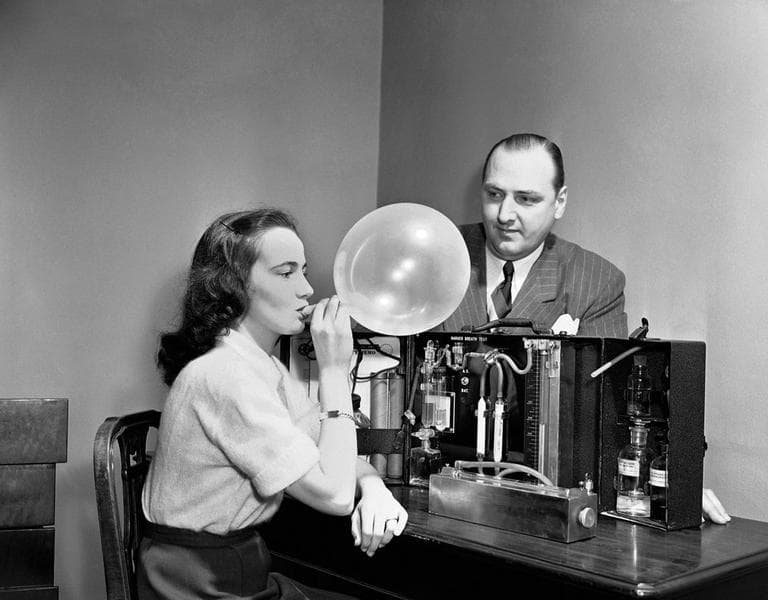Advertisement
How Police Nab Drunk Drivers: From Drunkometer To Breathalyzer

In 1938, on New Year's Eve, police in Indianapolis put a new piece of technology through its first practical test.
They used a breath analyzer to determine if someone had been drinking. What was then called the "Drunkometer" was based on the same idea as modern breathalyzers: a person blows into a bag, which contains chemicals that react according to how much alcohol is on a person's breath.
Modern breathalyzers first came on the market in 1954. Since then the idea behind the technology has been refined and now infrared spectroscopy is used in some models to determine alcohol levels.
While the number of deaths as a result of car accidents involving alcohol has fallen since records started being kept in 1982, more than 9,000 people died in such accidents in 2010.
Guest:
- Barron Lerner, professor of medicine at New York University's Langone School of Medicine and author of "One For the Road: Drunk Driving Since 1900."
This segment aired on December 31, 2012.